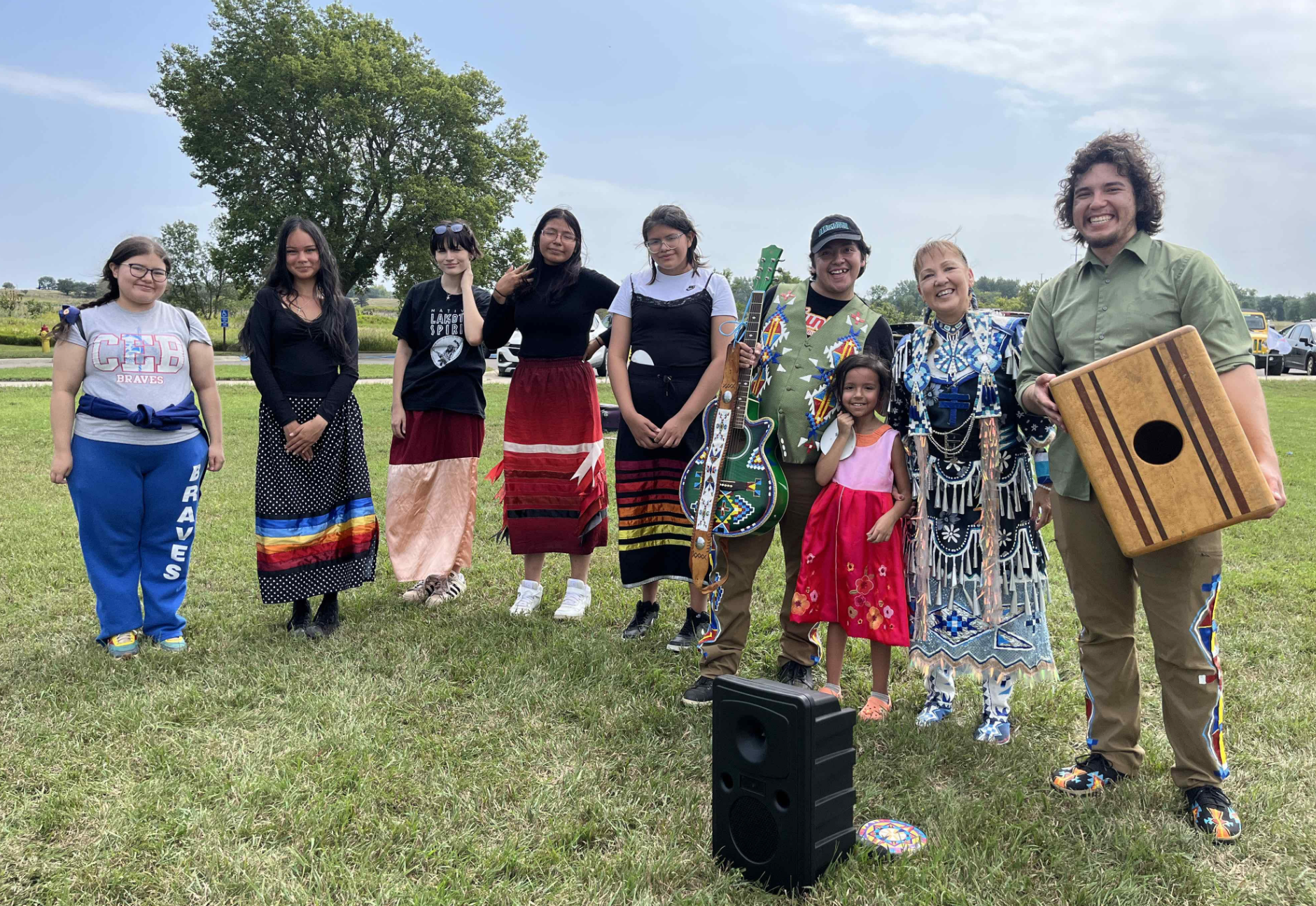
- Details
- By Levi Rickert
EAGLE BUTTE, SD — This summer, five young women from the Cheyenne River Sioux Reservation had the opportunity to visit Pipestone National Monument for Founders Day, an annual celebration that incorporates a variety of cultural activities and experiences. The nonprofit Cheyenne River Youth Project arranged the Aug. 23-25 trip for the teens, who ranged in age from 14 to 18.
For more than 3,000 years, native peoples have quarried the red stone at this location to make pipes for prayers and ceremonies. The tradition continues today, making Pipestone a sacred site for many — including the Lakota people.
“For us, connection to land is essential to our long-term health and well-being,” said Julie Garreau, CRYP’s chief executive officer. “Our Lakota culture is deeply rooted in this connection, so we are dedicated to giving our young people every possible opportunity to visit our sacred places. The land is part of who we are.”
Many of these sacred places lie far from the Cheyenne River reservation, home to four bands of the Lakota Nation. The reservation was established in 1889, when the Great Sioux Reservation was broken up into several smaller reservations, and the people lost access to sites that are critical to their cultural health.
“I’ve never been to Minnesota and didn’t know we had relatives as far away as here,” said Loula, 14. “It’s cool we (Lakota people) are spread out so far.”
“I talked with the young women about the importance of connecting to the land and taking care of it,” said Jerica Widow, CRYP’s programs director, who chaperoned the teens. “Although we are far from home, this is still Oceti Sakowin (Seven Council Fires) land.”
Widow invited teens enrolled in CRYP’s current Native Food Sovereignty and Lakota Culture internships to participate in the August trip, and the youth project opened up the opportunity to teens in the general community as well. The group left Eagle Butte on Friday morning, Aug. 23 and drove five hours to Pipestone, Minnesota.
Founders Day on Saturday, Aug. 24 was a busy one for the Cheyenne River teens. Not only did they have an opportunity to witness quarrying, traditional flute and foodway presentations, they learned how to make an atlatl and engage in target practice.
An atlatl is a spear-throwing device that allows hunters to launch projectiles more than 100 yards at speeds up to 100 miles per hour. This Stone Age technology is powerful and effective, and evidence indicates it has been used for approximately 30,000 years.
While they were at Pipestone, the teens also connected with longtime hoop dancer and culture bearer Jackie Bird, a member of the Sisseton Wahpeton Tribe of South Dakota and the Three Affiliated Tribes of North Dakota.
More Stories Like This
Native News Weekly (August 25, 2024): D.C. BriefsUS Presidents in Their Own Words Concerning American Indians
Happy New Year 2026 from Native News Online
Next on Native Bidaské: Covering Indian Country: Lessons from 2025 & the Road Ahead
The Stories That Started to Define Cultivating Culture in 2025
Help us defend tribal sovereignty.
At Native News Online, our mission is rooted in telling the stories that strengthen sovereignty and uplift Indigenous voices — not just at year’s end, but every single day.
Because of your generosity last year, we were able to keep our reporters on the ground in tribal communities, at national gatherings and in the halls of Congress — covering the issues that matter most to Indian Country: sovereignty, culture, education, health and economic opportunity.
That support sustained us through a tough year in 2025. Now, as we look to the year ahead, we need your help right now to ensure warrior journalism remains strong — reporting that defends tribal sovereignty, amplifies Native truth, and holds power accountable.
 The stakes couldn't be higher. Your support keeps Native voices heard, Native stories told and Native sovereignty defended.
The stakes couldn't be higher. Your support keeps Native voices heard, Native stories told and Native sovereignty defended.
Stand with Warrior Journalism today.
Levi Rickert (Potawatomi), Editor & Publisher


